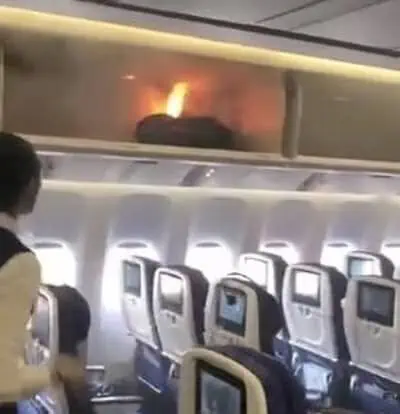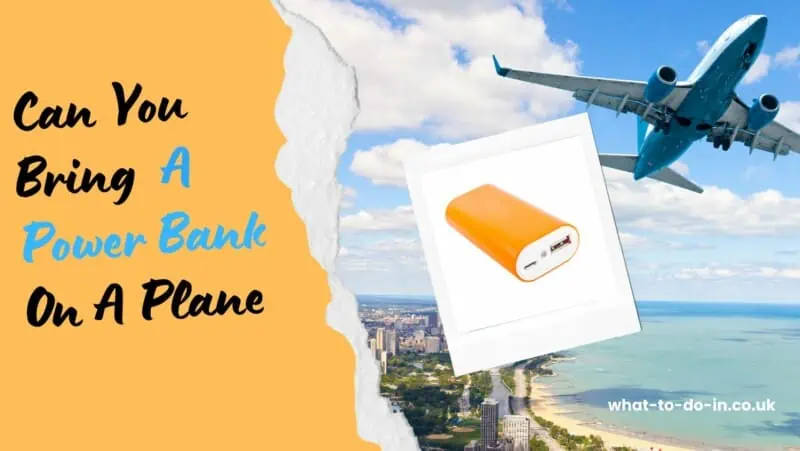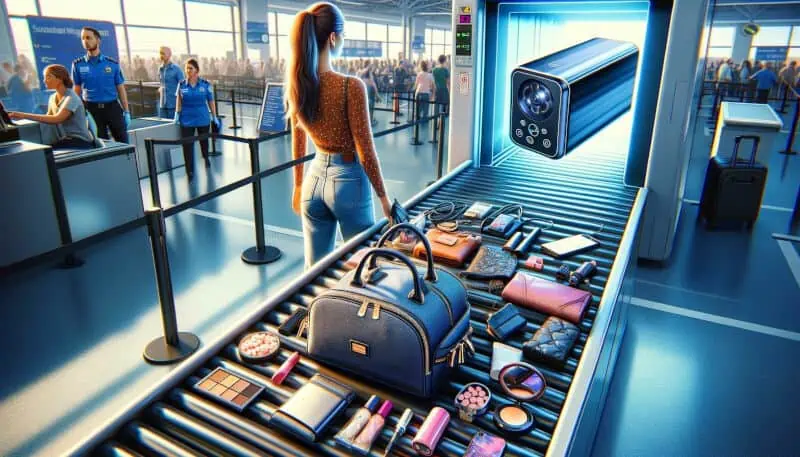In an age where electronic devices are integral to our daily lives, the ability to charge them on the go has become essential. Power banks, portable devices designed to charge electronics without needing a power outlet, have become a ubiquitous solution for travelers needing to keep their smartphones, tablets, and other gadgets powered up. The question of whether one can bring a power bank on a plane reflects the intersection of our reliance on technology and the stringent security measures of modern air travel.
The history of power banks on planes is closely tied to the evolution of air travel security and the advancements in battery technology. In the early days of portable electronics, spare batteries and charging devices were not a major concern for airline security. However, as lithium batteries became more common due to their high energy density and rechargeability, they also became a focus of safety regulations. Lithium batteries, which power most modern power banks, can pose a fire risk if damaged or short-circuited, leading to strict rules governing their transport on aircraft. Today, the ability to bring a power bank on a plane is subject to international regulations, with airlines and security agencies enforcing guidelines that balance the convenience for passengers with the imperative of safety. These regulations have become increasingly significant as travelers carry more devices and as the capacity of power banks continues to grow.
Can You Take Power Bank On A Plane?
When traveling by air, you may wonder if you can take a power bank on a plane. The answer is yes, but with certain restrictions. Power banks, also known as portable chargers or external battery packs, are subject to airline regulations due to their lithium-ion batteries. Typically, power banks with a capacity of less than 100 watt-hours (Wh) are allowed in carry-on luggage without approval from the airline. Those between 100 Wh and 160 Wh may require airline approval, and power banks over 160 Wh are generally not permitted. It’s crucial to check the power bank’s Wh rating and consult with your airline before flying, as rules can vary. Additionally, power banks are not allowed in checked baggage due to safety concerns. Taking a power bank on a plane can be incredibly beneficial, ensuring that your electronic devices remain charged throughout your journey. For a more in-depth look at the regulations and tips for traveling with a power bank, continue to the next section where we explore the topic further.
Transporting Power Banks on USA Domestic Flights: TSA Regulations
When traveling by air within the United States, passengers are allowed to bring power banks—portable chargers used to recharge electronic devices—onboard with them. However, there are specific Transportation Security Administration (TSA) guidelines that must be followed to ensure safe transport.
Power Bank Specifications and Restrictions

- Power banks with a capacity of up to 100 watt-hours (Wh) are permitted in carry-on bags without airline approval.
- If the power bank is between 100 Wh and 160 Wh, it may be allowed in carry-on luggage, but it requires airline approval.
- For power banks exceeding 160 Wh, special permission is required, and these are typically not allowed on passenger aircraft.
- Power banks are not permitted in checked luggage regardless of their capacity.
The device’s watt-hours (Wh) can usually be found on the power bank itself or by contacting the manufacturer. If you’re unable to determine the Wh, you can calculate it by multiplying the voltage (V) by the ampere-hour (Ah). For example, a power bank with 3.7V and 26.8Ah would have a capacity of approximately 99.16Wh, which is within allowable limits for carry-on luggage (TSA).
Packaging and Carrying Power Banks
To safely bring your power bank on a USA domestic flight, consider the following tips for packaging and carrying:
- Always carry power banks in carry-on luggage or on your person.
- Protect power bank terminals by covering them to prevent short circuits, which could lead to overheating or fire.
- It’s best to keep power banks in their original packaging or within a protective case.
- Do not charge electronic devices using power banks while on board the aircraft.
Going Through Security with Your Power Bank
At security checkpoints, TSA agents may examine your power bank. Be prepared to:
- Remove your power bank from your carry-on bag if instructed by security personnel.
- Show the power bank’s rating if requested, as it may need to be verified against TSA regulations.
- If traveling with multiple power banks, organize them for easy inspection.
Being Prepared for Airline-Specific Rules
Although TSA sets the overarching guidelines for what is allowed on domestic flights, individual airlines may have stricter policies regarding the transportation of power banks. Prior to your flight, it’s advisable to:
- Check your airline’s specific guidelines on power banks, as they may impose limitations beyond the TSA regulations.
- Contact the airline directly if your power bank is over 100Wh to seek the necessary approval.
- Review any additional safety measures or documentation that might be required by the airline for carrying power banks.
For the most current and detailed information on transporting power banks and other batteries, refer to the TSA website (TSA Power Banks).
Flying with Power Banks Internationally
When traveling internationally with power banks, it’s essential to be aware of the various regulations that apply. These regulations can vary significantly from one country to another, and non-compliance could lead to inconvenience or even confiscation of your device. Understanding both the International Air Transport Association (IATA) guidelines and the specific rules of the country you are traveling to or from is crucial for a hassle-free journey.
International Air Transport Association (IATA) Guidelines
- Power banks are considered as spare batteries and must be carried in carry-on baggage only.
- Power banks with a capacity of 100 watt-hours (Wh) or less are generally allowed without approval from the airline.
- For power banks with a capacity between 100Wh and 160Wh, airline approval is required.
- Power banks exceeding 160Wh are typically not allowed on flights.
- The rated capacity must be clearly marked by the manufacturer on the power bank.
- Each passenger is limited to a maximum of two spare batteries in the 100Wh to 160Wh range.
For more detailed IATA guidelines, refer to the IATA Baggage Tracking page.
Country Specific Regulations
While IATA provides general guidelines, individual countries may have additional rules for carrying power banks on flights. It is important to check the regulations of both the departure and arrival countries, as well as any countries you may transit through.
United Kingdom
Refer to the UK government’s guidance on electronic devices and electrical items for specific information regarding flying with power banks.
Europe
For European regulations, consult the European Commission’s page on lithium batteries.
Canada
The Canadian Air Transport Security Authority provides guidelines on power banks.
Australia
Guidance from the Australian government regarding batteries and power banks can be found on the Civil Aviation Safety Authority’s website.
New Zealand
For New Zealand’s rules, check the Civil Aviation Authority of New Zealand.
Asia
Asian countries may have varying regulations; it’s best to consult the specific country’s civil aviation authority.
Singapore
The Civil Aviation Authority of Singapore provides information on travelling by air with power banks.
10 Airline-Specific Regulations for Flying with Power Banks
American Airlines
- Power banks must be in carry-on baggage and are prohibited in checked baggage.
- For more information, visit American Airlines’ Restricted Items.
Delta Air Lines
- Personal electronic devices powered by batteries must be transported in carry-on baggage.
- Check Delta’s Prohibited or Restricted Items for details.
United Airlines
- United allows power banks in carry-on bags with airline approval for those over 100Wh.
- Visit United’s Dangerous Goods section for more information.
British Airways
- Power banks are only permitted in hand luggage and must not exceed 100Wh.
- For specifics, see British Airways’ Prohibited and Restricted Items.
Lufthansa
- Power banks must be carried in hand luggage, with a limit of two between 100Wh and 160Wh.
- Refer to Lufthansa’s Baggage Dangerous Goods for more.
Air Canada
- Power banks over 100Wh may require airline approval and must be in carry-on baggage.
- Details can be found on Air Canada’s Restricted and Prohibited Items.
Qantas
- Power banks are allowed in carry-on baggage and are limited to two between 100Wh and 160Wh.
- Check out Qantas’ Dangerous Goods for further details.
Emirates
- Power banks must be for personal use and carried in hand luggage.
- For Emirates’ guidelines, visit Baggage Calculator.
Air France
- Power banks are not allowed in checked luggage and must be under 100Wh for carry-on.
- More information is available at Air France’s Lithium Batteries.
Singapore Airlines
- Power banks are only allowed in hand luggage and should not exceed 160Wh.
- Visit Singapore Airlines’ Baggage Restrictions for more details.
Packing a Power Bank in Your Carry-On Luggage
When traveling by air, packing a power bank in your carry-on is often the preferred and sometimes the only permitted method. The International Air Transport Association (IATA) provides guidelines for batteries that must be complied with for safety reasons.
- Always check the watt-hour (Wh) rating of your power bank before packing. Power banks with a capacity of up to 100Wh are generally allowed without approval. Power banks between 100Wh and 160Wh may require airline approval.
- Ensure the power bank is for personal use and not for resale or distribution.
- Protect power banks from short circuits by keeping them in their original packaging, a protective case, or by taping over the connectors.
- Do not charge the power bank while on board the aircraft.
- Limit the number of spare power banks to what is needed for the duration of the trip and within airline regulations, usually no more than two.
Packing a Power Bank in Your Hold Luggage
Most airlines advise or require that power banks must be packed in carry-on luggage and not in checked luggage. This is due to the potential fire hazard power banks pose if they malfunction or are damaged. However, if for any reason you find it necessary to consider placing a power bank in hold luggage, you should take the following steps:
- Check with the airline first, as most prohibit such items in checked luggage due to safety concerns.
- If an airline does permit them in checked luggage, which is rare, ensure they are completely turned off and protected against short circuits.
- Place the power bank in the center of the suitcase to provide extra cushioning from any impacts that might occur during handling.
- Again, consider if you can carry it in your carry-on instead, as that is usually the safer and regulation-abiding method.
General Tips for Packing Power Banks
For both carry-on and hold luggage, there are some general tips you should follow to ensure safe and hassle-free travel:
- Keep the power bank in a cool, dry place to avoid exposure to extreme temperatures.
- Avoid packing power banks with other metal objects to prevent short circuits.
- Bring only the power bank you need to minimize risks and comply with airline regulations.
- If traveling internationally, familiarize yourself with both your departing and arriving countries’ customs rules regarding lithium batteries and power banks.
- Always have quick access to the power bank’s specifications, such as the watt-hour rating, in case you are asked by security personnel.
By adhering to these guidelines, you ensure that you are following safety protocols, and you also help maintain the well-being of everyone on board the aircraft. Always stay updated with your airline’s regulations as they can change and may have specific requirements or restrictions that are not covered here.
Essential Travel Gadgets Similar to Power Banks
When traveling by plane, in addition to a power bank, consider packing noise-cancelling headphones to block out the engine hum and chatter, ensuring a peaceful journey. A portable Wi-Fi hotspot can keep you connected without relying on airport or in-flight internet. For those who love to read, an e-reader with a long-lasting battery is a must-have, providing access to countless books without the bulk. A travel adapter is also crucial for keeping your devices charged, especially when flying internationally. Lastly, a compact, portable Bluetooth speaker can enhance your travel experience, whether you’re relaxing in your hotel room or enjoying a beach day. All these gadgets aim to make your flight and overall travel experience more comfortable and convenient.
FAQ’s About Can You Bring Power Bank On A Plane?
Travelers often wonder about the rules regarding carrying power banks on airplanes due to the essential need to keep our electronic devices charged while on the go. As power banks have become ubiquitous tools for keeping smartphones, tablets, and other gadgets powered, it’s important to be informed about the regulations and requirements of different airlines. Here we’ve compiled a list of frequently asked questions to help you understand what you can and cannot do when it comes to traveling with power banks.
Can I bring a power bank in my carry-on luggage?
Yes, you can bring a power bank in your carry-on luggage. In fact, airlines prefer that you carry power banks with you in the cabin to prevent risks in the cargo hold.
Is there a limit to the power bank capacity I can bring on a plane?
Yes, the limit is usually measured in watt-hours (Wh) and typically must not exceed 100 Wh for most airlines. Power banks above 100 Wh but under 160 Wh may require airline approval.
Am I allowed to carry multiple power banks with me?
Yes, you can carry multiple power banks as long as each one adheres to the airline’s rules regarding capacity and they are for personal use.
Can I use my power bank to charge devices during the flight?
Yes, generally you can use your power bank to charge devices during the flight, but it’s always best to check with the airline as policies can differ.
Should I keep my power bank in a specific type of packaging?
While not a strict requirement, it is recommended to keep your power bank in its original retail packaging or in a protective case to prevent short circuits.
Do power bank regulations differ for international flights?
Regulations for power banks on international flights are generally consistent with the International Air Transport Association (IATA) guidelines, but it’s still advisable to check with the specific airline.
Are power banks permitted in checked baggage?
No, generally power banks are not allowed in checked baggage due to safety concerns.
What happens if my power bank exceeds the allowed limits?
If your power bank exceeds the limits set by the airline, it may be confiscated during security screening or you may be asked to make special arrangements to transport it.
Are there any specific brands of power banks that are not allowed on planes?
There aren’t specific brands that are banned, but any power bank that seems damaged, defective, or has been recalled should not be brought on a plane.
If I purchase a power bank at the airport, can I bring it on the plane?
Yes, you can bring a power bank purchased at the airport on the plane, but ensure that it meets the airlines’ specifications for on-board power banks.
Packing It All Up
In summary, power banks are permissible on planes, but with certain restrictions. The key determining factor is the power bank’s capacity, measured in Watt-hours (Wh). Generally, power banks under 100Wh are allowed in carry-on luggage without prior approval, but those between 100Wh and 160Wh require airline approval. Power banks exceeding 160Wh are typically not permitted on flights. It’s crucial to remember that power banks are not allowed in checked luggage due to safety concerns, stemming from the risk of lithium batteries catching fire.
When traveling with power banks, it is recommended to keep them easily accessible in your carry-on bag, ensuring they are not activated accidentally, and that they are protected from damage. For international travel, it’s essential to verify the specific airline’s policies and any differing regulations that may apply in the destination country. Keeping abreast of the latest regulations regarding lithium batteries in-flight will minimize travel disruptions and enhance overall safety. Thus, by adhering to these guidelines, passengers can effectively navigate airport security and enjoy the convenience of their electronic devices during travel.






